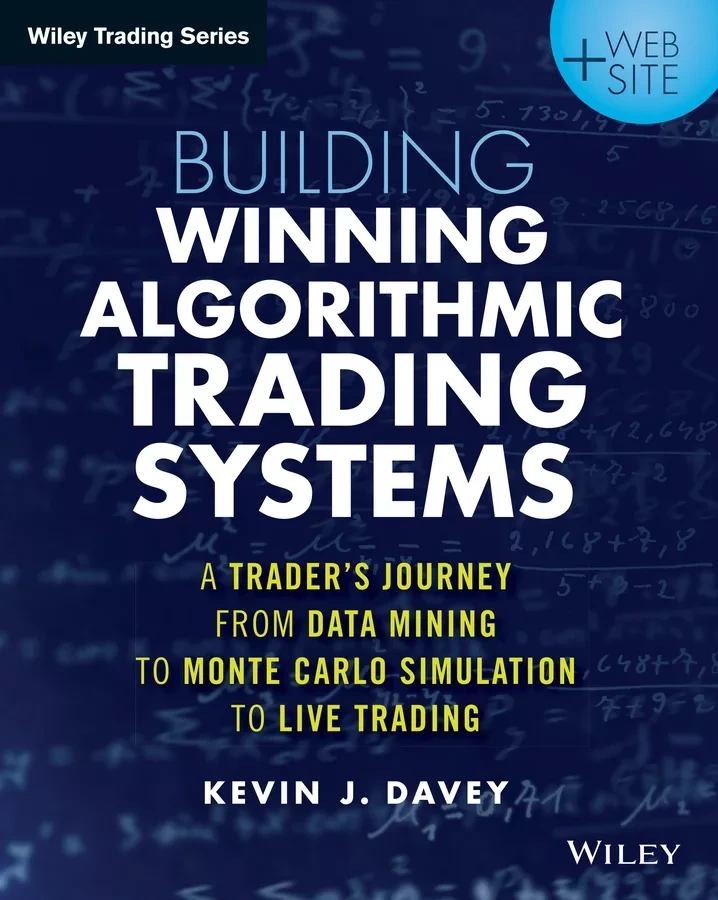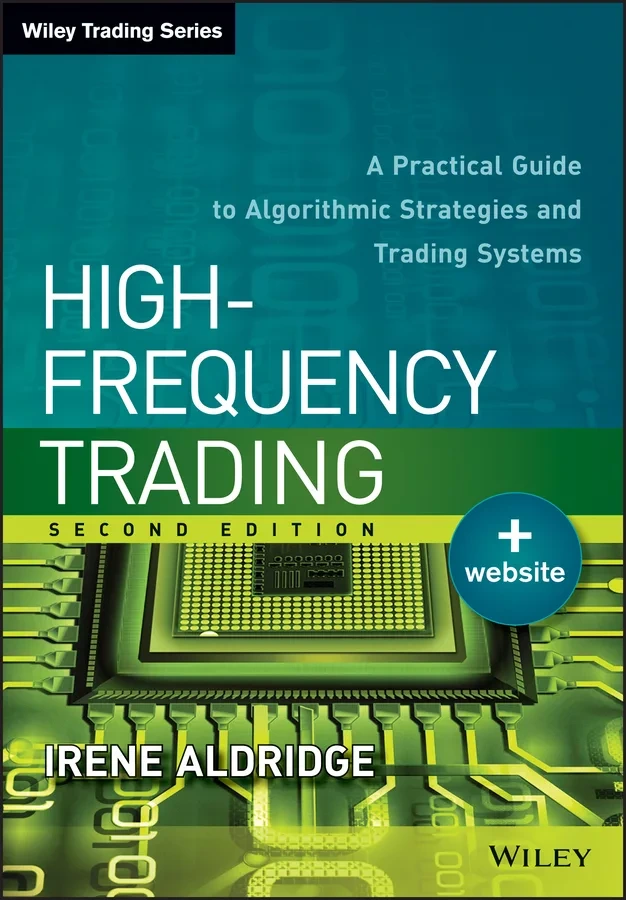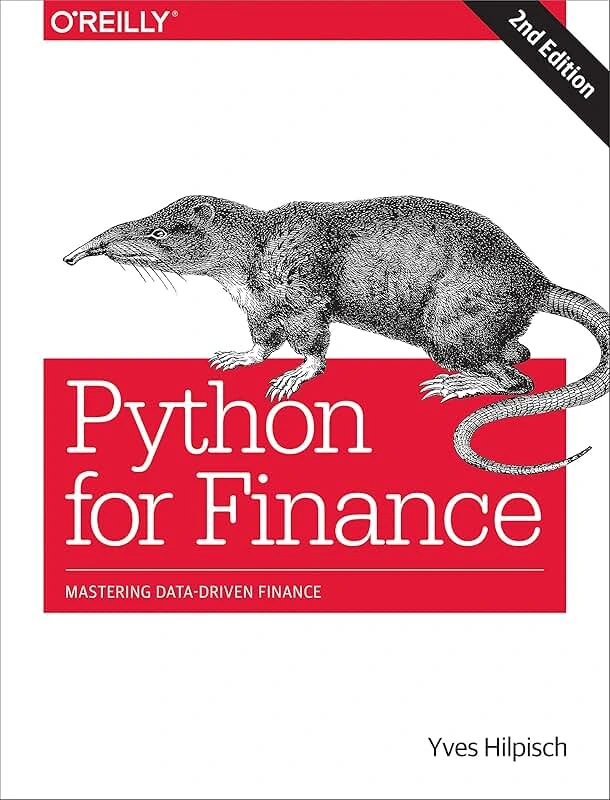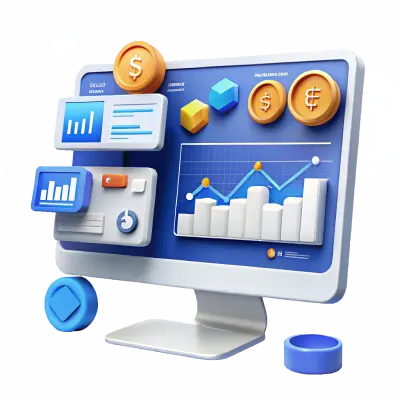Best Algorithmic Trading Books 2025: Expert Selection

Best books on algorithmic trading 2025: expert's choice
Manual or retail trading is the main type of trading in modern financial markets, but far from the only one. Algorithmic trading, which allows you to trade in automatic mode, is very popular. Those who are just beginning to master the world of trading choose the path of automatic or algorithmic trading, if, of course, they can afford it. Their desire can be understood, because the machine has no feelings and emotions, which greatly interfere with trading. Algorithms have initially laid down indicators, which it will adhere to, regardless of other factors.
Algorithmic trading or algotrading appeared in 1980. At that time this type of trading was not for everyone, it could be afforded by wealthy people or institutionalized, due to the availability of powerful computing power and hiring of advanced experts in the field of economics. Nowadays, algorithmic trading can be afforded by anyone with a computer at their disposal, but you still have to pay a lot of money for a working algorithm or hiring a professional in this industry.
In this article, you will learn what algorithmic trading is, as well as books to help you understand this tricky business.
Basic concepts
Algorithmic trading is a type of trading that involves dividing one large order into a number of small ones. This is done with the help of special splitting algorithms, which also process price characteristics and send the order for execution. The main objective is not to gain profit from the transaction, but to reduce the cost of execution and the risk of non-execution of the order, as well as to minimize the impact on the mood of market participants. 
For example: the task is to buy 1 thousand shares of a company. If you buy all of them in one lot, the information about the purchase will be displayed in the order book, which will inevitably lead to the reaction of market participants. On the plus side is the possibility of non-execution of the order, due to the low liquidity of this asset, as well as the increased cost of execution due to the size of the lot. With the help of special algorithms the shares of the necessary company will be bought evenly, without attracting attention, at a predetermined price, but this approach will require certain time expenditures.
Today more than 90% of trades on the market are made with the help of algorithmic trading. Take the most famous bank Goldman Sach: in the early 2000s there were about 600 traders, whose main task was to serve large clients. Up to our time there are only 2 securities traders left, and all the others have been replaced by 200 programmers who create trading algorithms, which are necessary for algorithmic trading.
Example of using algorithmic trading
Let's take the cryptocurrency market as an example. Let's say there is a cryptocurrency exchange and an exchanger where bitcoin is often cheaper. The program can be set up as follows:
-
Connect via API to the exchange and the exchanger. This will allow the algorithm to automatically buy and sell BTC at the moment when the rate will differ;
-
Put the minimum price difference between the platforms. For example, it is necessary that on the exchange BTC cost 3% more expensive than on the exchanger;
-
After the price difference (spread) appears, the algorithm automatically buys BTC on the exchanger and immediately sends it to the exchange, where it is sold for 3% more expensive. You don't have to worry about the speed of sending BTC today: the cryptocurrency reaches its destination quickly, thanks to various sidechains and parachains.
This is just one example of using algorithmic programs. Here everything depends on the trader's tasks and the size of his capital. This strategy is more suitable for small amounts, because cryptocurrency exchangers usually do not have a lot of funds to exchange. At the same time, large capitals will simply not be interested in this strategy, because they can earn much larger amounts.
How to create your own algorithmic program?
Creating an algorithmic program that will execute orders for you is not an easy task. You will need the knowledge not only of a programmer, but also of a trader, and it is even better that it should be one person. If you do not have enough knowledge, you will have to buy a ready-made program, with which you will also have to understand and set up everything correctly, or transfer funds to algotraders for trading - they will take a percentage of the profit. And one more important problem: people or companies that develop such programs are not always eager to sell them.
Algorithmic trading is suitable for investors with large capital, who use market-making, arbitrage trading, basket trading, front-running and other complex trading strategies, which require instant execution and bringing large capitals to the market.
However, if you still have the idea to create your own algorithmic program, you can't go anywhere without informative literature. Let's move on to the top 7 books that will give you the right idea about algorithmic trading, as well as tell you where to start when creating algorithmic programs.
“Algorithmic Trading” - Ernie Chan
The book is ideal for those who want to understand how to apply algorithms in trading. Ernie Chan, a well-known expert in the field of algorithmic trading, shares his experience in developing and testing trading strategies. The author describes the key stages: from the idea of a strategy to its implementation and testing on historical data.
The book is written in an accessible language, making it suitable for beginners. It covers basic concepts such as pair trading, the use of statistical methods and risk management. The author emphasizes the importance of evaluating a strategy before applying it in the real world.
-
Pros: simple explanations, practical focus, and plenty of examples to help better understand the material. However, readers who already have experience in programming or finance may find the book too basic;
-
Suitable for: beginners in algo-trading, as well as those who want to learn the basics of building trading algorithms with minimal technical skills.
“Building winning algorithmic trading systems” - Kevin Dave

A practical guide to creating profitable trading systems. Kevin Dave, an experienced trader and strategy developer, shares step-by-step instructions for building algorithms. The book covers all stages of development: from idea generation to testing and optimization.
The author focuses on the importance of reliable back-testing, explaining how to avoid over-optimization and errors related to historical data. A separate chapter is devoted to trade automation and integration of algorithms with brokerage platforms.
The peculiarity of the book is its applied nature: the author provides code samples and detailed instructions that allow readers to start developing strategies immediately after reading it.
This book will suit traders with experience who want to deepen their knowledge and start creating complex algorithms.
“Advances in Financial Machine Learning” - Marco Lo
A real find for those interested in the application of machine learning in finance. Marco Lo, a leading expert in quantitative analysis, offers advanced techniques for working with financial data.
The book covers such topics as developing and testing trading signals, risk management and portfolio optimization. Special attention is paid to the application of machine learning algorithms, including classification and clustering. The author also explains how to use Python to analyze data.
The material in the book is complex and requires prior knowledge of programming, math, and finance. However, those who are ready for these challenges will find here many ideas for creating their own algorithms.
“High Frequency Trading: A Practical Guide to Algorithmic Strategies and Trading Systems” - Irene Aldrich

The book focuses on high-frequency trading and is an essential resource for those who want to understand how high-speed algorithms work. The author explains in detail the key aspects of developing such strategies, including the technologies used to process real-time data.
Irene Aldrich emphasizes technical details, from the architecture of high-frequency systems to analyzing market data. She also looks at the risks and legislative aspects of high-frequency trading.
Who it's suitable for: technical professionals, programmers and traders who want to learn high-frequency trading at a deep level.
“Python for Finance: Mastering Data-Driven Finance” - Ives Hilpisz

A great resource for those who want to use Python in financial analysis and algorithmic trading. Ives Hilpisch explains how to work with financial data, create models, and automate trading processes.
The author offers practical examples to help the reader master libraries such as Pandas, NumPy, and Matplotlib. The book covers topics from basic data analysis to creating sophisticated risk management models.
Suitable for traders, analysts, and developers interested in programming and analyzing data in Python.
“Trading and Exchanges: Market Microstructure for Practitioners” - Lawrence Harris
Presents a fundamental guide to market microstructure. Lawrence Harris explains how financial markets function, how prices are formed, and how different participants affect liquidity.
The book is particularly useful for understanding how algorithms interact with markets. The author analyzes the behavior of market makers, arbitrageurs, and other participants.
Suitable for: traders and investors who want a deeper understanding of how markets work.
“Inside the Black Box: A Simple Guide to Quantitative and High-Frequency Trading” - Rishi K. Narang
Rishi K. Narang offers a unique perspective on the inner workings of quantitative trading strategies. The book is aimed at a general audience and explains complex concepts in simple language.
The author discusses how strategies are created, what data analysis techniques are used, and how risk is managed. Special attention is paid to the role of data in creating successful algorithms.
Suitable for beginners and experienced traders interested in developing quantitative strategies without delving into technical details.
Conclusion
Algorithmic trading is no longer a new, but actively developing trend in trading, which is improving every year. Algorithmic traders have long since begun to outperform even the most experienced traders in terms of profitability, which shows the usefulness and demand for the technology. Technologies to optimize and simplify the trading process are improving, which will contribute to the decrease in the number of retail traders, giving preference to automated trading.
However, now and in the near foreseeable future, algorithmic trading is not cheap, and there will be those who simply cannot afford it. The popularization of algorithmic trading will speak to the attraction of new individuals to the financial markets, and thus the development of the industry as a whole.
However, with the help of the literature that is given in this article, you will not only be able to get a basic knowledge of algorithmic trading, but also try your hand at developing it yourself. Of course, this will require at least basic knowledge of coding and programming, but it is definitely worth a try.
Want to learn more about crypto arbitrage?
Get a subscription and access the best tool on the market for arbitrage on Spot, Futures, CEX, and DEX exchanges.




